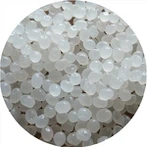New Japanese plastic is strong, durable and marine degradable!
Researchers led by Professor Takuzo Aida of the RIKEN Center for Advanced Matter Science (CEMS) in Saitama, Japan, have developed a durable plastic that does not contribute to microplastic pollution in the ocean.
The new material is as strong and biodegradable as traditional plastics, but it is special in that it breaks down in seawater. As a result, this new plastic is expected to help reduce harmful microplastic pollution that accumulates in the ocean and soil and eventually enters the food chain. The relevant experimental results were published in the journal Science on November 22.
Scientists have been working to develop safe and sustainable materials to replace traditional plastics, which are unsustainable and harmful to the environment. Although some recyclable and biodegradable plastics already exist, there is still a big problem. Current biodegradable plastics such as polylactic acid (PLA) often end up in the ocean, where they cannot be degraded because they are insoluble in water. As a result, microplastics (plastic fragments smaller than 5 millimeters) are harming aquatic life and entering the food chain, including our own.
In their new study, Aida and his team tackled this problem by using supramolecular plastics, polymers whose structures are linked together by reversible interactions. The new plastic is made by combining two ionic monomers that form cross-linked salt bridges, which give the material strength and flexibility. In preliminary tests, one of the monomers was sodium hexametaphosphate, a common food additive, and the other was a monomer of several guanidinium cations. Both monomers can be metabolized by bacteria, ensuring that the plastic is biodegradable once it is broken down into its constituent parts.
Key breakthrough: Salt bridge structure and controlled degradation
"It has always been thought that the reversibility of the chemical bonds in supramolecular plastics would make them fragile and unstable, but our new material is exactly the opposite," Aida said. In this new material, the salt bridge structure is irreversible unless exposed to electrolytes such as those found in seawater. The key discovery was how to create these selective irreversible cross-links.
Just like oil and water, when the researchers mixed the two monomers in water, they observed two separate liquids. One liquid was thick and viscous, containing the cross-linked salt bridges that form the important structure, while the other liquid was watery and contained salt ions. For example, when using sodium hexametaphosphate and alkyl biguanide sulfate, the sodium sulfate salt was expelled into the watery layer. The final plastic, alkyl SP, was made by drying the remaining material in the thick, viscous liquid layer.
This "desalting" step proved to be the key link; without it, the final dried material would be a brittle crystal that was unusable. When the plastic was placed in salt water and re-salted, its cross-linked structure quickly decomposed and could be completely decomposed within a few hours. Having thus created a durable plastic that was still soluble under certain conditions, the researchers then tested the quality of the plastic.
Key Findings: Reshaping of Supramolecular Polymers
The new plastic is non-toxic and non-flammable – meaning no CO2 emissions – and can be reshaped at temperatures above 120°C, like other thermoplastics. By testing different types of guanidine sulfate, the team was able to create plastics with varying degrees of hardness and tensile strength, properties that are comparable to or better than those of conventional plastics. This means that the new plastic can be tailored to suit needs; hard and wear-resistant plastics, plastics that resemble rubber silicones, plastics that can bear heavy loads, or low-stretch flexible plastics are all possible. The researchers also created marine-degradable plastics using polysaccharides that form cross-linked salt bridges with guanidine monomers. Such plastics could be used in 3D printing and in medical or health-related applications.
A new family of plastics: recycling and environmentalism
Finally, the researchers investigated the recyclability and biodegradability of the new plastic. After dissolving the initial new plastic in salt water, they were able to recover 91% of the sodium hexametaphosphate and 82% of the guanidine in powder form, demonstrating that the recycling process is both simple and efficient. In soil, the new plastic flakes completely degrade in 10 days, providing phosphorus and nitrogen to the soil like fertilizer.
"With this new material, we have created a new family of plastics that are strong, stable, recyclable, multifunctional and, importantly, do not produce microplastics," said Aida.









